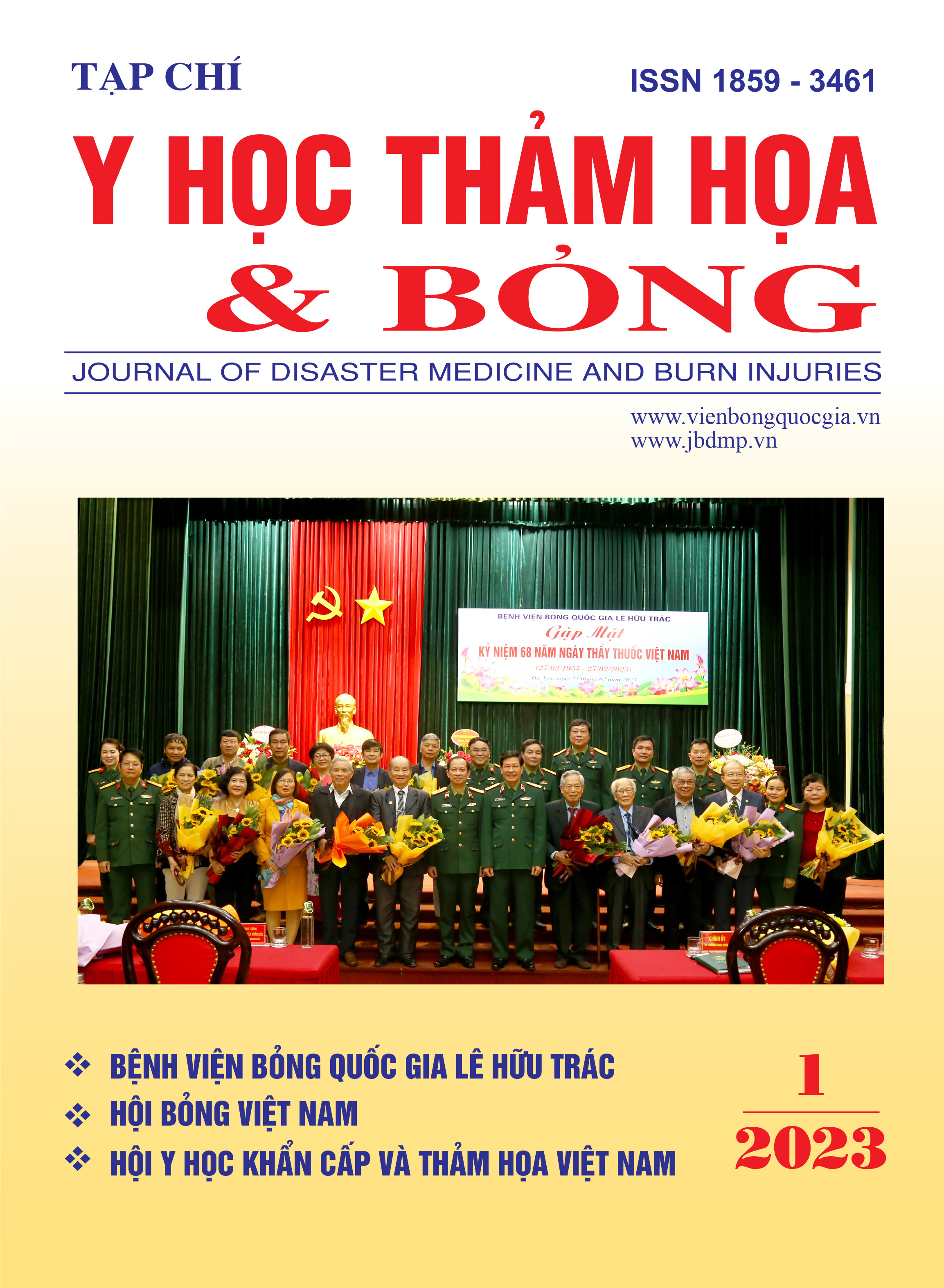The outcome in burn patients with inhalation injury treated at the Le Huu Trac National Burn Hospital
Main Article Content
Abstract
Aims: This study aims to comment on arterial blood gas and treatment outcomes in burn patients with inhalation injuries treated at the ICU, Le Huu Trac National Burn Hospital.
Materials and methods: Prospective study on 60 severe burn patients treated at the ICU, Le Huu Trac National Burn Hospital from 05/2021 to 05/2022. The patients were divided into two groups by age and burn extent: The study group (30 patients) with inhalation injury and the control group (30 patients) without inhalation injury. The indicators for monitoring and evaluation included: Arterial blood gases at the time of admission (both groups) and the following days (for the study group), complications and outcomes.
Results: The metabolic acidosis at the time of admission was more severe in the study group as compared to the control group (BE -9.3 ± 12.2mmol/l vs. -1.7 ± 5.7mmol/l, p < 0.05 and lactate level 4.52 ± 2.52mmol/l vs. 2.6 ± 1.65mmol/l, p < 0.05). During the first week after the burn, the burn patients with inhalation injury responded well to mechanical ventilation with the PaO2/FiO2 ratio above 250mmHg, blood lactate levels gradually decreased to normal values. The mortality rate in the inhalation injury group was higher than the control group (60% vs 3.33%, p < 0.001).
Conclusion: The burn patients with inhalation injury had severe metabolic acidosis at the time of admission, had a good response to mechanical ventilation in the first week after the burn, and the mortality rate was high.
Article Details
Keywords
Burns, inhalation injury
References
2. You K., Yang H.-T., Kym D., et al. (2014). Inhalation injury in burn patients: establishing the link between diagnosis and prognosis. Burns, 40 (8), 1470-1475.
3. Colohan S.M. (2010). Predicting prognosis in thermal burns with associated inhalational injury: a systematic review of prognostic factors in adult burn victims. Journal of Burn Care & Research, 31(4): 529-539.
4. Foncerrada G., Culnan D. M., Capek K. D., et al. (2018). Inhalation injury in the burned patient. Annals of plastic surgery, 80 (3 Suppl 2), S98.
5. Mlcak R.P., Suman O.E., Herndon D.N. (2007). Respiratory management of inhalation injury. Burns, 33(1): 2-13.
6. Holm C., Mayr M., Tegeler J., et al. (2004). A clinical randomized study on the effects of invasive monitoring on burn shock resuscitation. Burns, 30 (8), 798-807.
7. Barton R. G., Saffle J. R., Morris S. E., et al. (1997). Resuscitation of thermally injured patients with oxygen transport criteria as a goal of therapy. The Journal of burn care & Rehabilitation, 18 (1), 1-9.
8. Chotalia M., Pirrone C., Ali M., et al. (2021). The utility of arterial blood gas parameters and chest radiography in predicting appropriate intubations in burn patients with suspected inhalation injury - A retrospective cohort study. Burns, 47 (8), 1793-1801.
9. Edelman D. A., White M. T., Tyburski J. G., et al. (2006). Factors affecting prognosis of inhalation injury. Journal of burn care & research, 27 (6), 848-853.
10. Monteiro D., Silva I., Egipto P., et al. (2017). Inhalation injury in a burn unit: a retrospective review of prognostic factors. Annals of burns and fire disasters, 30 (2), 121.


